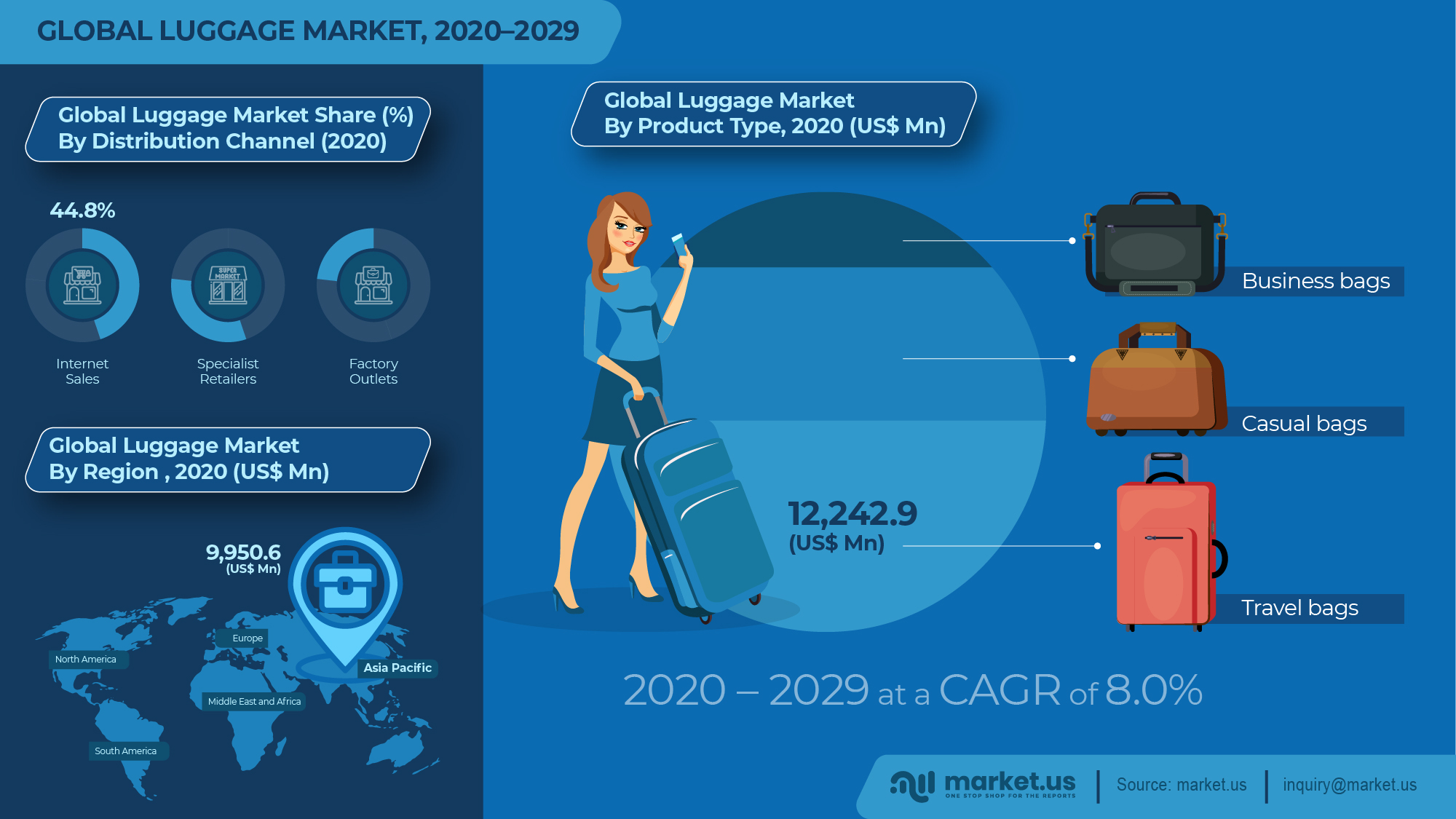
Global Luggage Market Infographics Description:
- The global luggage market is estimated at US$ 25,516.1 Mn in 2020.
- Worldwide luggage market is projected to reach US$ 50,807.4 Mn in 2029 at a CAGR of 8.0% from 2020 to 2029.
- Amongst product types, the travel bags segment in the global luggage market is estimated to account for a majority revenue share of 48.0% in 2020 end.
- Among all the distribution channel segments, internet sales is expected to register the highest CAGR of over 8.6%, followed by specialist retailers segment.
- Market in Asia Pacific is expected to dominate the global luggage market. It is expected to account for the largest market revenue share as compared to that of markets in other regions.
- Companies profiled in the report are Christian Dior SE (LVMH Moët Hennessy Louis Vuitton SE), LVMH (Rimowa Gmbh), Hermès International S.A., Samsonite International S.A., Piramal Enterprises Ltd. (VIP Industries), Iconix Brand Group (London Fog), Delsey, Travelpro Products Inc., JRSK Inc. (Away), and United States Luggage Company Llc.





